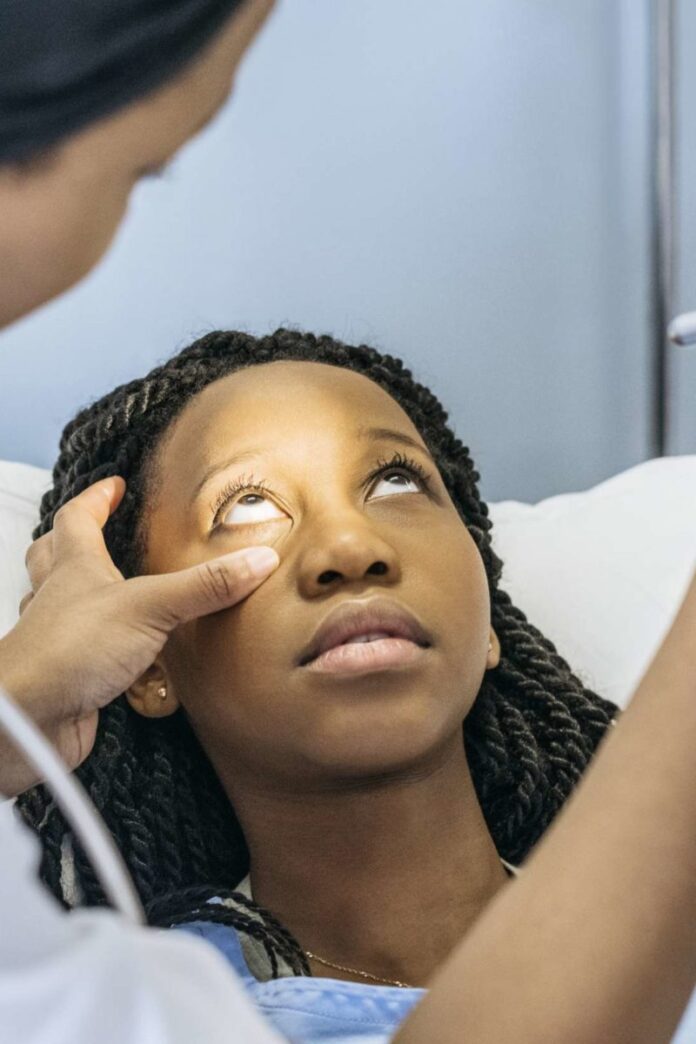Pupils are one of the four vital signs in medicine. They form the basis of a routine and thorough evaluation of head injuries. The pupil diameter measurement is essential in diagnosing traumatic brain injuries (TBI).
The pupils can give important information about the brain’s condition, but misinterpreting their reactions can lead to a misdiagnosis. Therefore, medical professionals need to have a thorough understanding of pupil reactions and their meaning.
This blog post will discuss the normal pupil reaction, different types of abnormal pupils, and how to interpret them.
What is pupil evaluation?
Pupil evaluation is a part of the routine examination of patients who have suffered head trauma. Doctors also perform it on some patients with other injuries, such as those to the spine or spinal cord.
Pupils react differently to various stimuli, including ambient light and brightness changes, accommodation, convergence, and accommodation-convergence coupling.
These reactions can provide information about the brain’s condition.
Why do doctors measure the pupils?
When a patient is injured, the brain is often affected. The pupils are a part of the nervous system and can provide important information about the condition of that system.
For example, if someone’s pupils react differently to light or move independently from each other, this may mean there is damage to their brainstem.
With this information, a doctor can determine the severity of their injuries. Doctors also use pupil size and reactivity to indicate how much pain a patient is experiencing.
What is the normal pupil reaction?
The normal pupil reaction is to constrict when the eye is exposed to bright light and dilate when the eye is in a dark environment. The pupil will also become larger when viewing something that requires attention.
What are the types of abnormal pupillary reactions?
There are several types of abnormal pupil reactions:
1. Anisocoria
The pupil on one side of the eye is smaller than on the other. This can be due to damage to the eye or brain stem and can also be a symptom of severe conditions, like traumatic brain injuries.
2. Relative Afferent Pupillary Defect (RAPD)
The pupil on one side of the eye is smaller than on the other, but both pupils normally react to light. This can be due to damage to the optic nerve.
3. Adie’s (Tonic) Pupil
The pupil on one side of the eye is smaller than on the other, and both pupils are slow to react to light.
Why pupil evaluation is essential in diagnosing traumatic brain injuries
The pupils are a common area of injury in traumatic brain injuries (TBIs). When the head is hit or injured, it can cause damage to the brain stem.
This can affect how the eye and pupils react to light, indicating whether there has been trauma to this body area.
Pupil evaluation comes into play here because it can help doctors determine whether the brain has been damaged. Pupils are also used to diagnose head injuries in infants and children who may not be able to communicate with their caregivers.
Use of the pupilometer in the pupil evaluation of patients with TBI
There have been several methods of pupil evaluation in the past, but none of them has been as accurate or easy to use as the pupilometer.
Sometimes, doctors would need to shine a light into a patient’s eye and then measure pupil size and also how long it takes for their pupils to react by constricting or dilating.
This method is often inaccurate because it relies on visual interpretation alone.
However, the pupilometer is entirely objective. The device records the results, so there’s no need to interpret them. In addition, health professionals can use it on patients who cannot communicate, such as those with traumatic brain injuries.
The pupilometer helps doctors better understand how the brain functions and can help them make more informed decisions about their care.
In terms of portability, the pupilometer is small and lightweight, making it easy to transport. It has a range of applications in the medical field, including neurology, psychiatry, and ophthalmology.










![Anso FG Reviews: UPDATED 2024 [ansofg.com] Anso FG Reviews UPDATED 2024 [ansofg.com]](/wp-content/uploads/2023/12/Anso-FG-Reviews-UPDATED-2024-ansofg.com_-100x70.png)







